Ava Langenhop was always sick.
From "the time she was born," she was "just a sick baby," the 9-year-old's mother, Alicia Langenhop, told CBS News. She'd catch any cough or cold. Before she was two months old, she went to the hospital twice for viral infections. Ear infections were constant. Scraped knees turned into skin infections.
Alicia and Jon Langenhop didn't understand what was causing it. They thought Alicia might be bringing illnesses home from her job at a local daycare. When their second daughter, Olivia, was born, she "followed the same path": Constant illnesses, frequent infections and multiple hospitalizations. It was grueling, the parents said.
"It was a real strain, trying to figure out whose turn is it next to stay home with the sick kid, and all the different hospital bills and doctor's visits," Alicia Langenhop said. "That was a pretty rough first three years of having kids."
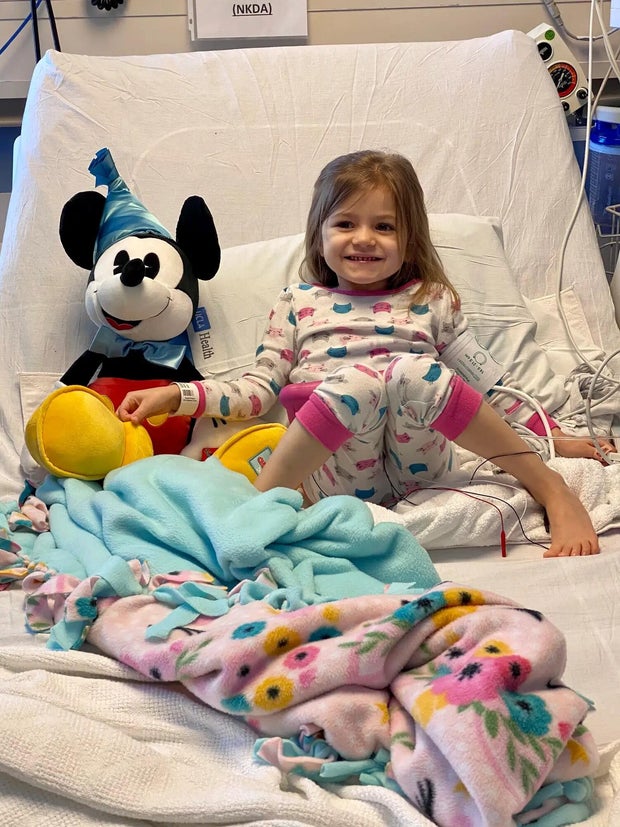 Ava Langenhop receives treatment at UCLA.
UCLA Health / Langenhop family
Ava Langenhop receives treatment at UCLA.
UCLA Health / Langenhop family
When Ava was three, her gums started to get inflamed and bleed during brushing. A periodontist suggested that the Langenhops test their daughters for autoimmune diseases. It was a world the young couple was completely unfamiliar with.
They had to travel to Cincinnati, about four hours from where they lived in Canton, Ohio, to get tests that confirmed Ava had LAD-1. The rare disorder means a person's white blood cells are unable to enter infection sites and kill bacteria, leaving patients vulnerable.
As the Langenhops struggled to understand the diagnosis, they got even more devastating news: Olivia, just a year old, also had the disease.
What is LAD-1, and how is it usually treated?LAD-1 symptoms start at birth, according to the Immune Deficiency Foundation. Soft tissue infections, slow-healing wounds and gum infections are common. The lives of people diagnosed with it are "often severely shortened" because of the frequent illnesses, the foundation says. Alicia Langenhop said doctors told them not to Google the disease.
The only corrective treatment for LAD-1 is a stem cell transplant via bone marrow donation, according to the Immune Deficiency Foundation. Neither Langenhop parent was an exact match for their daughters, and the girls couldn't donate to each other since they each had the disease. There was one other familial possibility: Alicia Langenhop was pregnant. They hoped their son would be able to donate bone marrow. But when Landon Langenhop was born in October 2019, tests found that he also had LAD-1.
The news left the parents "overwhelmed," the mother of three said. It also meant they had to turn to the national bone marrow donor registry. There were no exact matches for the children, and the Langenhops weren't satisfied with the odds.
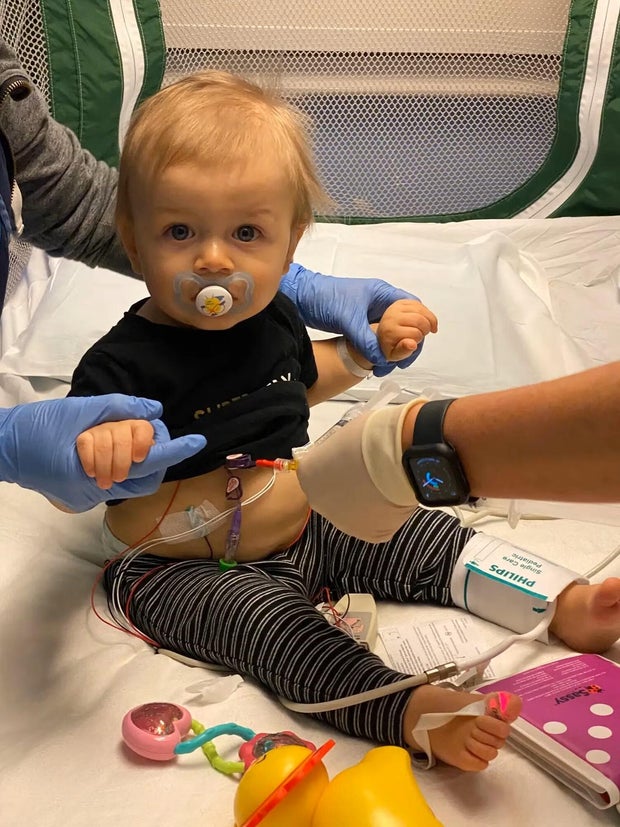 Landon Langenhop receives treatment at UCLA.
UCLA Health / Langenhop family
Landon Langenhop receives treatment at UCLA.
UCLA Health / Langenhop family
"The success rate with a match from the registry was 75%. That didn't really sit well with us, because that's a 25% chance that each of our kids would not survive the transplant," Alicia Langenhop said. It wasn't what she and her husband wanted to hear "when talking about their lives."
During an appointment, a member of the Langenhops' care team mentioned that a doctor in Los Angeles was interested in speaking with them about a clinical trial he was helping lead.
"It was kind of a no-brainer for us to try it, at least," Jon Langenhop said.
Clinical study recapThe Langenhops enrolled in a clinical trial testing an investigational therapy developed by Rocket Pharmaceuticals. Nine patients were enrolled in the trial across three clinical sites. The group was so small because of the rarity of the condition.
Dr. Donald Kohn, a pediatric bone marrow transplant physician who led the trial site at UCLA Mattel Children's Hospital in California, said the therapy essentially allows a patient to be their own stem cell donor. That makes it safer than a bone marrow donation, Kohn said.
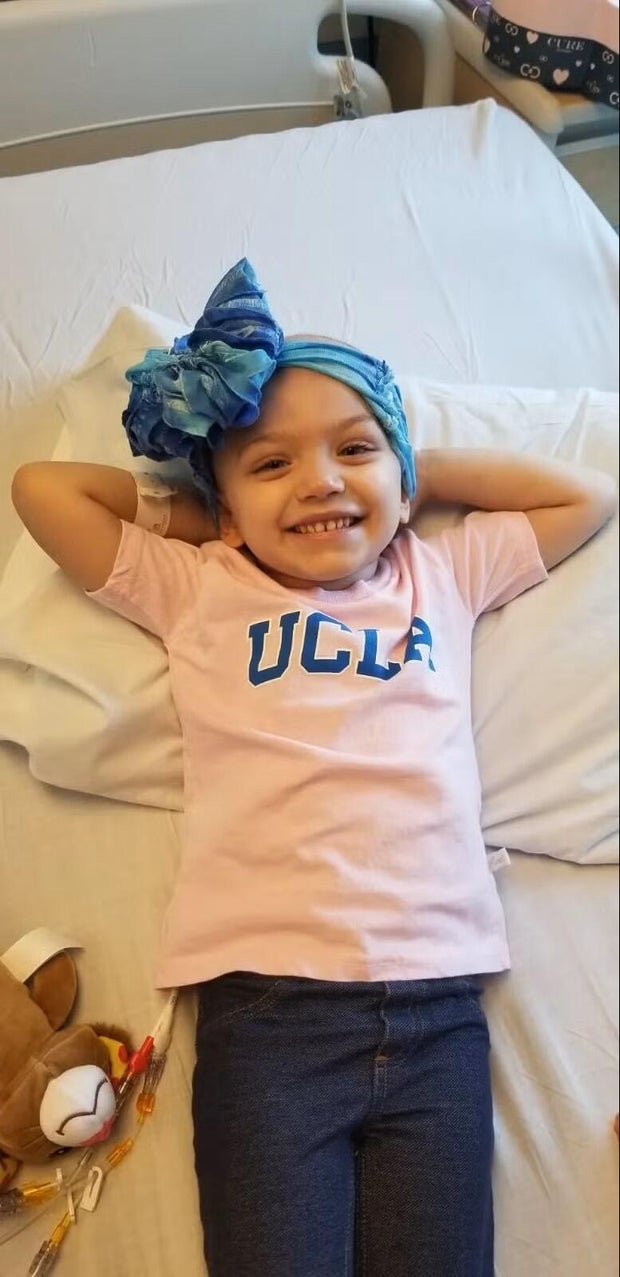 Olivia Langenhop receives treatment at UCLA.
UCLA Health / Langenhop family
Olivia Langenhop receives treatment at UCLA.
UCLA Health / Langenhop family
First, a patient was given a chemotherapy medication to encourage their stem cells to leave the bone marrow where they form and travel into the bloodstream. Then, blood was collected and the stem cells separated from the blood cells. The stem cells were then transferred to Rocket Pharmaceuticals' laboratory.
There, the cells were cultured and injected with a virus that carries the gene that LAD-1 patients are missing, Kohn said. The patient receives another round of high-dose chemotherapy to wipe out their existing bone marrow stem cells. Then, the new stem cells are brought back to the hospital and injected back into the patient through an IV.
Ava was the second person to be enrolled in the trial, followed by Olivia and Landon. The family had planned to travel between California and Ohio, returning home between treatments but the COVID-19 pandemic changed that. Instead, they lived in Los Angeles for about nine months. The kids were treated one by one, and each spent about a month in the hospital while they underwent the therapy.
"It was heartbreaking to see them go through it all. It was painful with the chemo and all that. It was a lot to see them go through," Alicia Langenhop said. "One of us was spending all of our time in the hospital with one kid, while the other was back at the apartment with the other two kids. We felt like we didn't have another choice. We thought, 'This is what we have to do. We're going to get through this.'"
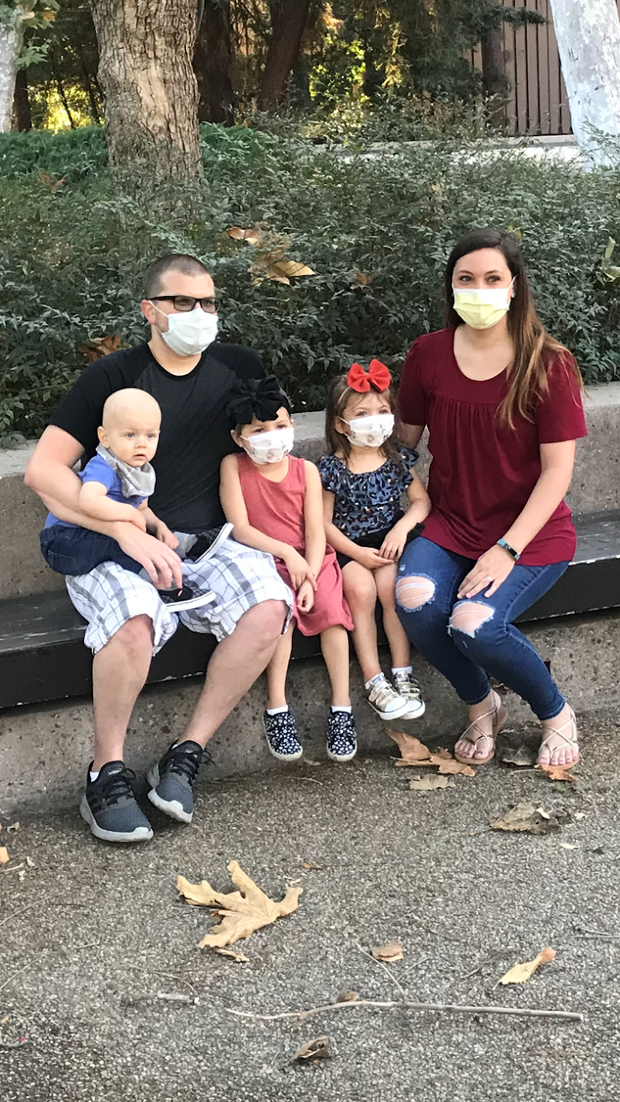 The Langenhop family during treatment.
UCLA Health / Langenhop family
Recovery and science
The Langenhop family during treatment.
UCLA Health / Langenhop family
Recovery and science All nine patients produced healthy immune cells capable of fighting infections, Kohn said, and are continuing to do so. None of the patients who participated in the trial have had severe infections since their treatment, he said. Six of the patients will be followed by UCLA for at least 15 years.
"We're careful not to say cured, because that implies permanence, which we don't know," Kohn said. "But as far as we follow them ... there has been no change at all in the level of the number of gene-corrected cells. It's absolutely stable."
Five years after participating in the study, the Langenhop children are doing well. Ava plays basketball. Olivia, a dancer and cheerleader, just celebrated her seventh birthday. Landon is playing T-ball. All three are enrolled in public school. Since they participated in the trial, none of them have had to go to the hospital, except for their annual follow-ups with Kohn.
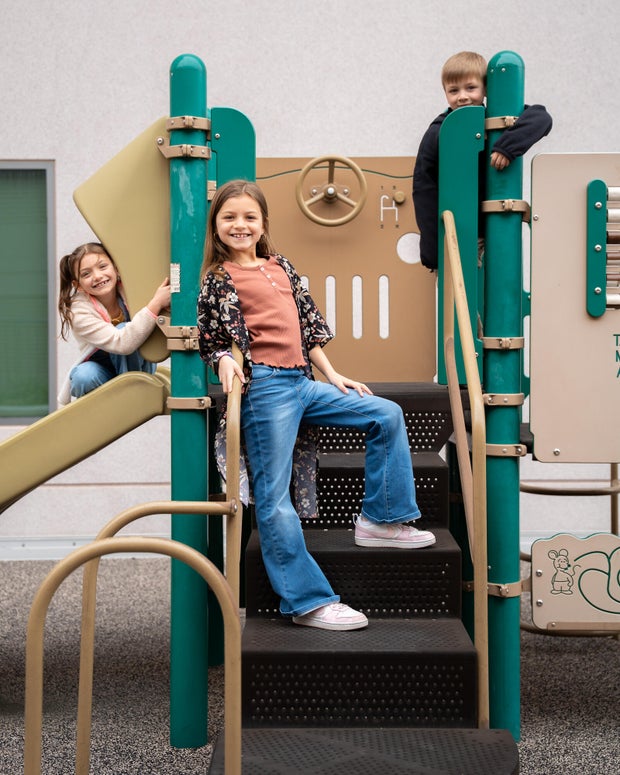 The Langenhop siblings in 2025. From left: Olivia Langenhop, Ava Langenhop, and Landon Langenhop.
UCLA Health / Cesar Sarmiento Blanco
The Langenhop siblings in 2025. From left: Olivia Langenhop, Ava Langenhop, and Landon Langenhop.
UCLA Health / Cesar Sarmiento Blanco
"When they had their first scraped knee or cold after the transplant and didn't get extremely sick, actually seeing it with our own eyes, really made it obvious that it was working, and that it was all worth it," Alicia Langenhop said.
The therapy that the clinical trial studied is now under review with the Food and Drug Administration, UCLA said in a news release. The goal is to have the therapy approved as a licensed product that can be used to treat patients, Kohn said.
The Langenhops said they are honored that their children could help create a medication that may be used to treat others.
"It's incredible. It's fascinating to us, because we're just normal people," Alicia Langenhop said. "When you think of the numbers and think how we had three of the nine patients that received this, and possibly because of that other kids in the future could receive this treatment, it's pretty indescribable."
More from CBS News
Kerry Breen







